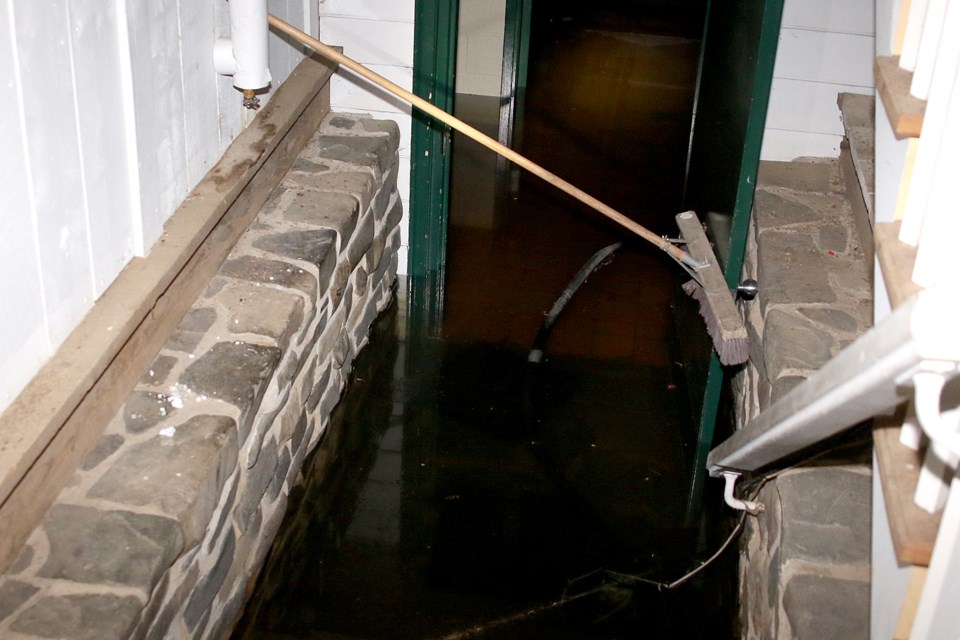THUNDER BAY – The Great Hall at Fort William Historical Park is submerged in three feet of water, forcing officials to cancel next month’s winter carnival event.
Park general manager Sergio Buonocore said the situation could get much worse, with a pair of ice jams causing water levels to surge on the Kaministiquia River, leading to concerns the entire facility could flood for the fourth time since 1977.
As a precaution, the site has been indefinitely closed to visitors, Buonocore saying similar conditions existed in 2008, when four feet of water poured into the park in less than half an hour after an ice dam gave way.
Buonocore said it’s a safety issue.
“About a week-and-a-half ago the water levels started to rise at the Fort, to the point where we now have inundation in several areas, including our signature building, the Great Hall,” he said on Friday.
“We’ve lost our septic system, so we’ve had to close down all our bathrooms and water systems, power and gas. As a result of that, the place has become very unsafe. We have to be very careful.”
The carnival, one of the major attractions on FWHP’s calendar, routinely draws thousands to the provincially owned park on the Family Day weekend, visitors eager to test their luck in the snow maze, slide on the hills or experience pioneer life in Ontario’s northwest.
This year’s event was also supposed to include midway rides for the first time.
Buonocore said it was a disappointing decision to have to make, but one that was made out of necessity.
“But we have to put the health and safety of our guests and staff ahead of all that,” he said. “It’s just not possible to do.”
Over the past four decades, the province has spent more than $20 million on flood-related repairs, the low-lying Fort seemingly at risk every spring from Mother Nature’s wrath.
This year is no different, Buonocore said.
But he’s hopeful lessons learned in the past will help keep the costs down in 2019.
“We’ve flooded this basement at least three times before and after the first flood, in 2003, we moved all expensive equipment out of all basements, all low-lying areas here at the Fort, and when we reconstructed it, we used special engineering techniques that were designed just for this property, so when we flooded subsequent to that, it’s been proven to us in two floods since that there was very little damage.”
The walls have been designed to be waterproof and electrical plug-ins have been raised off the ground, as two examples.
Buonocore is crossing his fingers that when the ice jam does break, the Fort won’t find itself under water again.
“It could happen, it depends on how the jam is forming. Right now we have sensors all along the river that measures the river flow. Depending on what nature brings us, it could be a problem. But we’re on it. We check it every day.”
In 2012 a three-metre-high, two-kilometre dike that ringed the provincial park was proposed, but neighbour concerns and the environmental process have stalled the project for several years.
